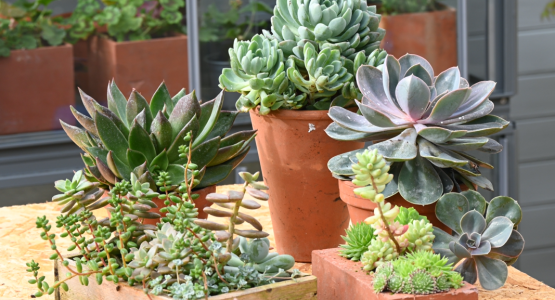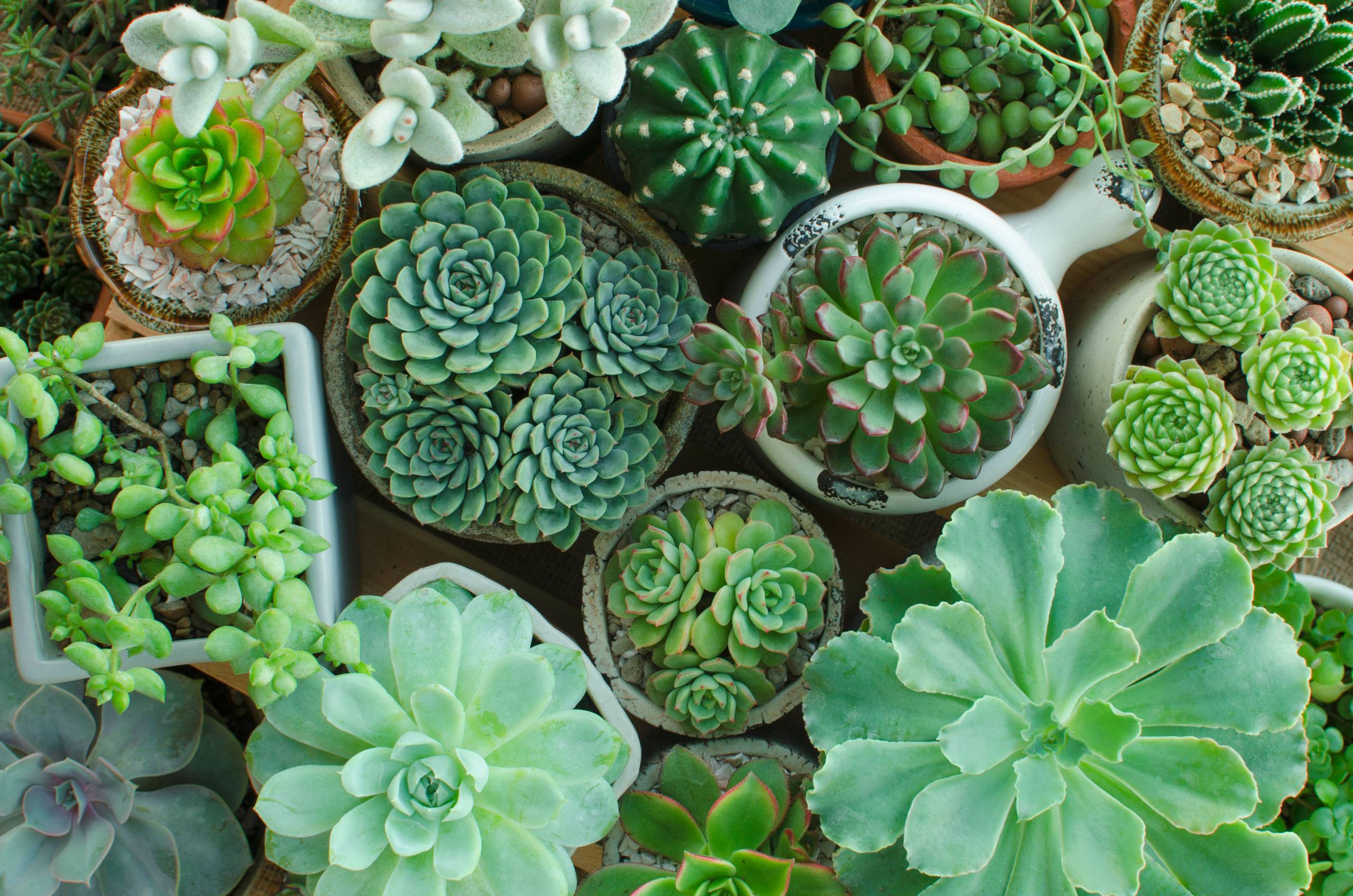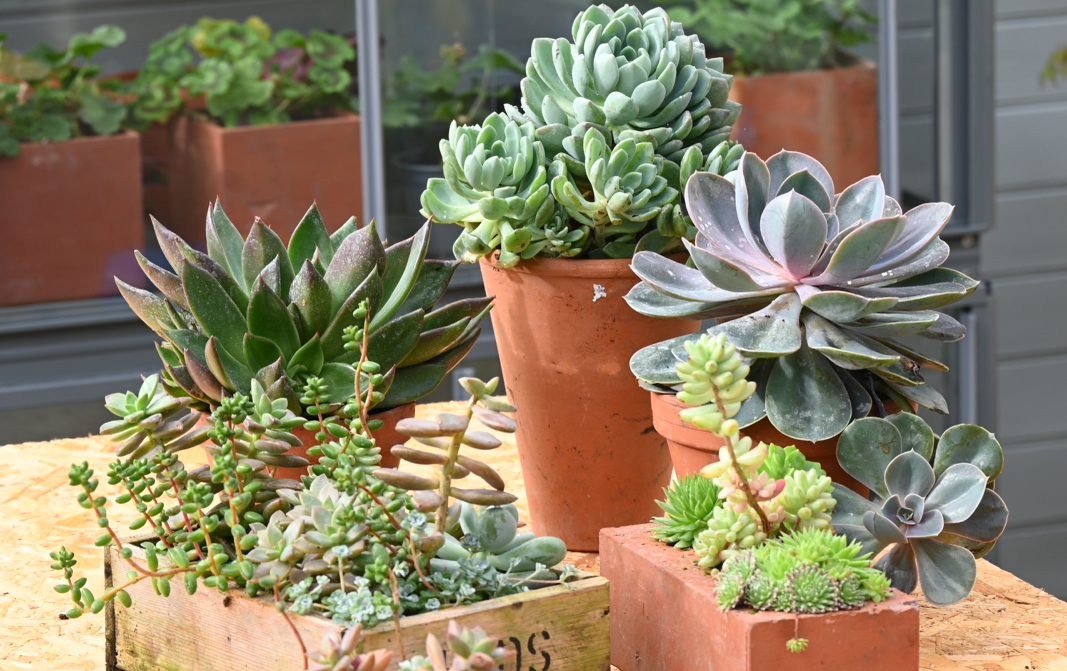Growing Succulents in a Greenhouse: A Complete Guide for Enthusiasts

Succulents have taken the horticultural world by storm, and for good reason: they’re stunning, varied, and often surprisingly easy to care for. But in the temperamental climate of the UK, growing succulents outdoors year-round can be challenging. This is where the magic of a greenhouse truly shines. By providing a controlled environment, a greenhouse allows you to cultivate an impressive range of succulents that might otherwise struggle.
In this post, we’ll explore the best temperatures for succulent growth, share a few unique features you can add to your greenhouse to make it both functional and beautiful, and offer practical tips to help your succulent collection thrive.
Why Grow Succulents in a Greenhouse?
Succulents are native to some of the world’s driest regions, from the deserts of Mexico to the rocky hills of South Africa. While many species are surprisingly resilient, UK winters with their cold dampness pose real challenges: prolonged wetness can lead to root rot, and frost can kill tender plants outright.
A greenhouse offers a solution by:
- Regulating temperature: Protecting plants from frost and sudden drops.
- Reducing moisture: Providing shelter from relentless rain.
- Maximising light: Extending the growing season with increased daylight.
But success in greenhouse growing requires more than simply sheltering your plants. Let’s delve into the details.
Ideal Temperatures: Finding the Sweet Spot
Succulents vary widely in their natural habitats, but there are general temperature ranges that will help most types thrive:
- Daytime: Aim for around 18–24°C (64–75°F).
- Night-time: A drop to around 10–13°C (50–55°F) is usually beneficial.
These ranges mimic the natural pattern succulents are accustomed to: warm days and cooler nights. Some species can tolerate higher daytime temperatures (up to around 29–30°C), but prolonged exposure to heat above this can stress the plants and cause etiolation (stretching).
In winter, it’s important to avoid temperatures below 4°C (39°F), especially for frost-tender succulents like Echeveria and Crassula. Hardy succulents (such as some Sempervivum or Sedum varieties) can tolerate lower temperatures, but even these benefit from a frost-free environment.
Tip: Invest in a good greenhouse thermometer that records minimum and maximum temperatures. This way, you can quickly spot if your greenhouse is getting too cold at night or overheating during sunny days.
Humidity: The Often-Overlooked Factor
UK air tends to be humid, especially in autumn and winter. High humidity can cause fungal diseases and rot, which succulents are particularly prone to.
Aim to keep greenhouse humidity around 30–50%. Ventilation is key:
- Roof vents help hot air escape naturally.
- Side vents allow cooler air to enter, creating circulation.
- Use an oscillating fan during damp months to keep air moving.
A Few of the Best Succulents to Grow in a Greenhouse
While succulents as a group are wonderfully diverse, some varieties tend to do particularly well in a greenhouse environment—offering a balance of beauty, resilience, and interest. Here are a couple of standout choices:
🌱 Echeveria ‘Perle von Nürnberg’
This classic hybrid is popular for its rosettes of lilac-grey leaves with a soft pink blush, which intensifies under bright light.
- Why it thrives: Echeverias love bright, indirect sun and benefit from the warmer daytime greenhouse temperatures.
- Extra tip: Remove dead lower leaves to keep the rosette neat and reduce the risk of pests.
🌱 Haworthia cooperi
A charming small succulent known for its translucent, bubble-like leaf tips that look almost like glass.
- Why it thrives: Unlike some succulents, Haworthia copes well with slightly lower light, making it perfect for shadier corners or lower tiers of a greenhouse display.
- Extra tip: Water sparingly in winter; these plants are sensitive to root rot if kept too wet.
🌱 Sedum morganianum (Burro’s Tail)
Famous for its long, trailing stems covered in plump, blue-green leaves, this succulent is striking in a hanging pot.
- Why it thrives: The controlled greenhouse environment protects its delicate leaves from damage by heavy rain and strong wind, common outdoors.
- Extra tip: Avoid moving the pot often, as the leaves can drop easily.
🌱 Aloe aristata (Lace Aloe)
Compact, with dark green, triangular leaves edged in white ‘teeth’, and an attractive, lacy pattern.
- Why it thrives: Tolerant of slightly cooler temperatures and less prone to rot than some other Aloes.
- Extra tip: In summer, it may produce tall flower spikes with orange or coral blooms

🌱 Lithops (Living Stones)
Tiny and wonderfully weird, these resemble pebbles and can produce striking daisy-like flowers.
- Why it thrives: Lithops need lots of light and very minimal water—conditions that a carefully monitored greenhouse can deliver perfectly.
- Extra tip: Avoid watering in winter and just after flowering; this helps prevent splitting or rot.
These examples aren’t just beautiful—they’re also varied in form, colour, and habit, giving your greenhouse collection visual interest all year round.
By choosing a mix of rosette-forming succulents like Echeveria, trailing types like Sedum, compact gems like Haworthia, and the wonderfully strange Lithops, you can create a collection that feels like a miniature botanical garden under glass.
Unique Features to Enhance Your Greenhouse
Adding a few thoughtful and creative touches can turn a functional greenhouse into a true sanctuary. Here are two unique ideas you might consider:
1. A Living Gravel Path
Instead of a plain concrete or stone path, create a wide gravel walkway and plant hardy, low-growing succulents like Delosperma, Sedum, or Sempervivum directly into the gravel.
This path:
- Acts as a natural humidity buffer, as gravel dries quickly.
- Adds texture and colour.
- Showcases your plants at ground level, giving the space an organic, desert-like feel.
Make sure to use free-draining soil beneath the gravel and keep foot traffic light or confined to stepping stones.
2. Tiered Display Benches
Succulents come in all shapes and sizes, and many truly shine when displayed at eye level. Build or buy tiered benches:
- Lower levels for larger specimens like Aloe or Agave.
- Middle shelves for medium-sized Echeveria or Kalanchoe.
- Top shelves for tiny Lithops or rare seedlings.
Not only does this maximise space, but it also creates an ever-changing display. Consider using natural materials like reclaimed wood or stone to complement the earthy tones of your plants.
Designing the Ideal Greenhouse for Succulents
Beyond these unique features, a well-designed greenhouse should focus on four essentials: light, drainage, airflow, and temperature control.
1. Light
Most succulents need bright, indirect sunlight. In the UK, even in summer, light levels can be lower than in their native habitats.
- Position: If possible, place your greenhouse with its longest side facing south.
- Glazing: Clear polycarbonate or toughened glass lets in the most light.
- In midsummer, use shade cloth (30–40%) to protect plants from scorching.
2. Drainage
Succulents hate wet feet.
- Use benches with slatted tops so water can drain freely.
- Keep pots on raised trays filled with gravel, which stops them from sitting in water.
- Avoid using saucers under pots except in the driest periods.
3. Airflow
Good air circulation prevents fungal infections.
- Install a small solar- or mains-powered fan.
- Open vents on warm days to encourage fresh air.
- Avoid packing plants too closely together.
4. Temperature Control
Besides heaters, consider:
- Thermal mass: Large stones or water barrels can absorb heat during the day and release it slowly at night.
- Automatic vent openers: Useful for days when you’re away.
- Insulating bubble wrap: Line the inside of your greenhouse in late autumn to keep heat in during winter.
Watering Tips: Less Is More
One of the most common mistakes is overwatering. Succulents need a period of dryness between waterings to thrive.
- In the active growing season (usually spring and summer): Water when the top few centimetres of soil are dry.
- In winter: Many succulents go dormant and need little to no water.
Tip: Water in the morning so the greenhouse can dry out during the day, reducing overnight humidity.
Soil and Potting: Think Fast-Draining
Use a specialist cactus or succulent compost, or mix your own:
- 2 parts gritty sand or perlite.
- 1 part potting soil.
- 1 part fine gravel or pumice.
Terracotta pots are ideal as they allow water to evaporate through the sides, keeping roots drier.
Seasonal Care: Adapting Through the Year
Spring
- Gradually increase watering as growth resumes.
- Check for pests like mealybugs or aphids.
- Repot crowded plants.
Summer
- Monitor for overheating; add shade cloth if needed.
- Increase ventilation.
- Feed lightly with a balanced fertiliser.
Autumn
- Begin reducing watering as temperatures drop.
- Check plants for signs of rot or pests.
- Install insulation if you use bubble wrap.
Winter
- Keep watering minimal or stop entirely.
- Ensure heaters and thermostats are working.
- Remove dead leaves to prevent mould.

A Few Advanced Touches for Enthusiasts
- Grow lights: Useful in winter to supplement natural daylight.
- Misting system: Helps dust off leaves, but use sparingly to avoid raising humidity too much.
- Automatic irrigation: Drip systems can help if you travel, but always adjust carefully to avoid overwatering.
Final Thoughts
Growing succulents in a greenhouse can be one of the most rewarding ways to enjoy these remarkable plants. With the right balance of temperature, light, and care, you’ll create an environment where your collection can thrive year-round—even in the unpredictable British climate.
Beyond the basics, adding personal and creative touches, like a living gravel path or custom display benches, turns your greenhouse into more than just a growing space: it becomes a living gallery, a retreat, and a testament to your passion.
Whether you’re nurturing hardy Sempervivum or collecting rare South African Lithops, the combination of science, creativity, and patience will reward you with a stunning, ever-changing display that truly reflects the beauty of nature.
